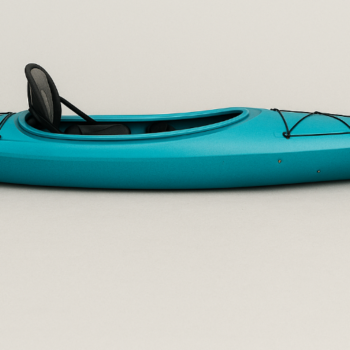Discover
Marine Weather
Know the weather
Marine weather is an essential consideration for anyone planning to go boating, fishing, or engage in other water activities. The weather can have a significant impact on the safety and comfort of your boating experience, so it’s important to understand the basics of marine weather. By monitoring the weather forecast and keeping an eye on changing conditions, you can make informed decisions about when and where to go boating, and ensure a safe and enjoyable experience on the water.

Ocean Swell
Weather conditions can have a significant impact on ocean swell. Strong winds, particularly those blowing over long distances, can generate larger and more powerful swells. Storm systems can also create larger swells as the low-pressure systems cause the water to rise and fall more dramatically. In contrast, calm weather conditions typically produce smaller and more manageable swells. Understanding how weather conditions can impact ocean swell is important for anyone planning to engage in water activities, such as surfing or boating, as larger swells can create more hazardous conditions. It’s important to monitor weather conditions and ocean swell forecasts to ensure a safe and enjoyable experience on the water.

Beach Conditions
Beach flags are an important tool for keeping beachgoers safe in Australia. Different color-coded flags are used to indicate different weather conditions, such as water quality, waves, and dangerous marine life. For example, a yellow flag indicates that the water conditions are moderate, while a red flag indicates strong currents or waves. A black and white quartered flag indicates the presence of dangerous marine life, such as sharks or jellyfish. It’s important to pay attention to beach flags and follow the instructions of lifeguards to ensure a safe and enjoyable time at the beach.

Marine Weather Charts
Marine weather charts are a valuable tool for anyone planning to engage in water activities. To read a marine weather chart, it’s important to understand the different symbols and colors used to represent weather conditions. For example, blue lines indicate areas of low pressure and the potential for storm systems, while red lines indicate areas of high pressure and calmer weather conditions. Wind speed and direction, wave height, and swell direction are also typically included on marine weather charts. By understanding how to read marine weather charts, you can make informed decisions about when and where to go boating or engage in other water activities. It’s recommended to consult with local experts or authorities for more specific information on interpreting marine weather charts in your area.

Bar Crossing
Crossing a bar can be hazardous in certain weather conditions. It’s important to pay close attention to the weather forecast and conditions when planning a bar crossing. Strong winds, large waves, and tide changes can create dangerous conditions and make crossing a bar treacherous. It’s recommended to only cross a bar in calm weather conditions with minimal swell and wind. Before crossing a bar, it’s also important to ensure that your boat is seaworthy and equipped with proper safety equipment, such as life jackets and flares. Always err on the side of caution and never take unnecessary risks when crossing a bar.
What are you looking for?
Lorem ipsum dolor sit amet, consectetur adipiscing elit, sed do eiusmod tempor incididunt ut labore et dolore magna aliqua. Ut enim ad minim veniam, quis nostrud exercitation ullamco laboris nisi ut aliquip ex ea commodo consequat.

Sailing

Reef Fish

Sharks

Fishing Boats

Invertebrates

Personal Watercraft (Jet ski)
Explore Marine Environments
Australia’s aquatic environments are as diverse as its landscapes, ranging from iconic beaches to tranquil mangroves, estuaries, to fresh and saltwater lakes. Learn more about these diverse habitats.
Lake
Sandflat
Rock pool
Reef
Breakwall
Ocean rocks
Mangrove
Estuary
Discover More
There’s something for everyone. Dive into our resource library to learn fun facts and get information on everything marine. All your Australian marine life and lifestyle resource in one place!

Runabout Boats: The Versatile Boat Everyone Wants - Here's What To Know
Thinking of buying a runabout boat? Here’s what you need to know. Runabout boats are the go-to choice for...

Buying A Jet Ski: Types, Prices & Tips To Avoid Mistakes
Many People Get It Wrong: Here’s What To Know About Jet Skis. Owning a jet ski opens up a world of adventure —...

Buying a Kayak or Canoe - Get it Right & Avoid Costly Mistakes
Looking to buy a kayak or canoe? Here's what to know. Kayaks and canoes unlock some of the best paddling...

Inflatable Boats & RIBs: Everything You Need to Know Before You Buy
Looking to buy an inflatable or RIB? Here's what to know. Whether you're after a compact paddle dinghy for calm...

Murray Cod Lures and Baits: Catch More Cod With These Proven Winners
Top Murray Cod baits, backed by experts & seasoned anglers. Murray cod (Maccullochella peelii) are incredible...

The Ideal Setup for Trout Fishing in Australia: A Complete Guide
Get Geared Up - Dialling In Your Trout Fishing Setup Trout fishing offers a peaceful escape and a thrilling...

Bait Jig Rig & Variations
Bait jig rigs represent a crucial piece of tackle for the angling world, blending the art of lure design with the...

Running Sinker Rig & Variations
The running sinker rig, also known as the ball sinker rig, is an extremely popular and easy to create rig. There...

